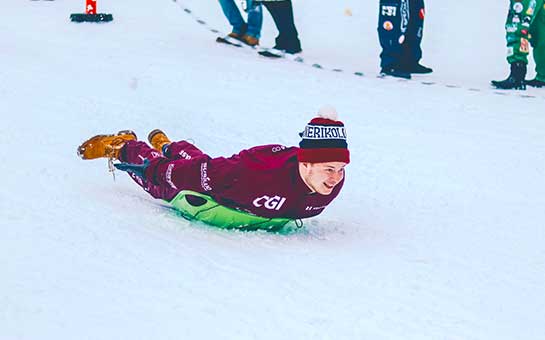When you’re visiting a cold country during winter, you’re probably longing to see falling snow. There aren’t many activities that you can enjoy during the snowfall like sledding, also known as tobogganing. It’s the simple yet immensely enjoyable activity of sliding down artificial, ice-covered chutes and snow-covered slopes.
Sledding is a winter activity that you can enjoy with your friends, family, and even colleagues. However, it’s important to stay safe while indulging in this fun activity. If you have any plans of going sledding while overseas, then sledding travel insurance can be a lifesaver for you.
Travel Insurance for Sledding
When buying sledding hazardous sports travel insurance, keep these things in mind:
- As kids are most likely go sledding and tobogganing (and, thus, get injured), be sure to include them in your sledding travel insurance policy.
- A standard travel insurance plan may exclude coverage for a potentially hazardous activity like sledding. Be sure the plan you select offers the appropriate coverage.
- Make sure your insurance plan includes benefits for emergency medical evacuation in case the worst should occur.
Basics of Sledding and Tobogganing
A toboggan or sled was originally made of poles tied together with thongs. For better performance and improved design, they are now made of high-quality wood. They may also be made of laminated wood or metal. Thin, straight-grained boards of oaks, birch, or hickory are fastened together with light cross-pieces.
Sledding is a fun sport that involves sliding down a snow-covered slope at a high speed. The bent front end of the sled is designed to support heavy weight, even over soft snow. The activity becomes fun as you slide down open slopes on loose and fluffy snow. Tobogganing is fiercer than sledding, as it is a competitive world sport among professionals.
More than one person at a time can ride the sled by either sitting or lying prone. The sled can be steered by dragging a foot in the snow or lifting the front end. You might be able to attain speeds reaching 45–60 miles per hour (about 72–96 kilometers per hour), depending on the steepness and length of the slope. Sledding can also be used to haul heavy loads along wilderness trails during winter.
Most experts recommend you to wear safety equipment before indulging in the activity. At times, you may require special training to control the speed and comfortably steer the sled. Protective gear including a helmet is recommended for all levels of sledding and tobogganing.
Risks of Sledding and Tobogganing
If you believe that sledding poses no health risks or cause serious injuries, think again. It’s ranked fourth in terms of personal risk on the list of hazardous sports activities. Travel insurance for sledding is a must-have. Here are the various risks of sledding and tobogganing:
- Cranial injuries are very common while sledding or tobogganing. Many people have reported injuries due to their head colliding with the ground, their sled, or another person.
- The breakneck speed of the sled can become difficult (or impossible) to control and lead to a collision with a boulder, tree, or even a wall.
- Most helmets prevent you from concussive head injuries, but this doesn’t necessarily mean that you are completely protected from head injuries.
- People usually take one glance at the slope and terrain of a snow-covered hill and decide to go sledding. They may not know that sledding down this hill has led to many serious injuries, especially among beginners.

